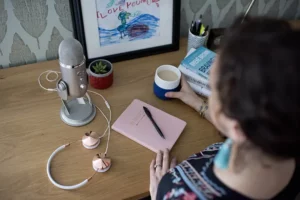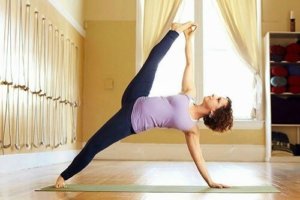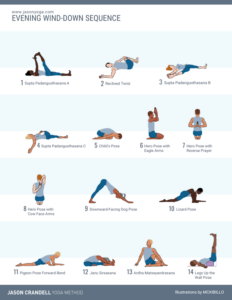Key Takeaway About Parivrtta Janu Sirsasana:
You don’t have to press the sitting bone that you’re leaning away from in Parivrtta Janu Sirsasana into the floor. In fact, you may have a better all-around experience posture if you allow that sitting bone to lift up. Yes, you read that correctly. Here’s why:
The pelvis and spine work best when they work together. In fact, the pelvis and spine are so functionally integrated that I think of them as two parts of the same system when it comes to movement. When you do a forward bend with your spine, you do a forward bend with your pelvis (anterior tilt). When you do a backward bend with your spine, you do a backward bend with your pelvis (posterior tilt). There are a few minor exceptions and complications to this rule of thumb, but the logic is sound. In fact, if you take your pelvis and spine and move them in opposite directions you will typically produce excess compression and tension somewhere in the spine. And, while this may look fancy on Instagram, excess tension and compression at spinal junctions is not in anyone’s best interest, nor does it fall under the scope of teachings that we can fairly describe as “yoga.”
Experiment with Parivrtta Janu Sirsasana
Since the spine and pelvis work best when they’re both sharing the same set of motions, I want you to experiment with lifting the sitting bone that you’re moving away from when you do Parivrtta Janu Sirsasana. You read that correctly. Experiment with lifting the opposite buttock slightly instead of pressing it down so that your pelvis can rotate laterally over your thigh bones slightly. You’ll still receive a big ‘ole side-stretch, you’ll produce more length in your spine, and chances are that you’ll reduce excess compression in the lower back and sacroilliac region on the side that you’re moving toward. In short, you’ll probably like it. A lot. If not, feel free to press both sitting bones down and keep it old school.
Use the illustration above to hone your pose and experiment with changing the alignment of your base. Enjoy.
SEQUENCING FOR PARIVRTTA JANU SIRSASANA
You can find a fully-illustrated, 16-pose sequence for Parivrtta Janu Sirsasana here.
{illustration by MCKIBILLO}





